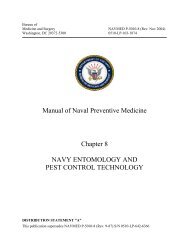ENVIRONMENTAL FINAL GOVERNING STANDARDS ITALY
ENVIRONMENTAL FINAL GOVERNING STANDARDS ITALY
ENVIRONMENTAL FINAL GOVERNING STANDARDS ITALY
You also want an ePaper? Increase the reach of your titles
YUMPU automatically turns print PDFs into web optimized ePapers that Google loves.
<strong>ITALY</strong> - 6 Hazardous Waste<br />
C6.2. DEFINITIONS<br />
C6.2.1. Acute Hazardous Waste. Those wastes listed in Appendix A, “List of Hazardous<br />
Substances & Materials,” with a “P” designator.<br />
C6.2.2. Annual Waste Report. (Modello Unico di Dichiarazione Ambientale —MUD).<br />
An official statement listing quantity and type of waste generated and disposed of in the previous<br />
calendar year.<br />
C6.2.3. Battery or Accumulator. Any source of electrical energy generated by direct<br />
conversion of chemical energy and consisting of one or more primary battery cells (nonrechargeable)<br />
or consisting of one or more secondary battery cells (rechargeable).<br />
C6.2.3.1. Portable battery or accumulator. Any battery, button cell, battery pack,<br />
or accumulator that:<br />
C6.2.3.1.1. Is sealed;<br />
C6.2.3.1.2. Can be hand carried; and<br />
C6.2.3.1.3. Is neither an industrial battery or accumulator nor an automotive<br />
battery or accumulator;<br />
C6.2.3.2. Button cell. Any small round portable battery or accumulator whose<br />
diameter is greater than its height and which is used for special purposes such as hearing<br />
aids, watches, small portable equipment, and back-up power.<br />
C6.2.4. Bulky Waste. Refrigerators and freezers, televisions, computers, dishwashing and<br />
laundry machines, air conditioners, and any other large-sized waste (i.e., furniture). These<br />
comprise both hazardous and non-hazardous waste.<br />
C6.2.5. By-product. All products that are not primary products and have another use or<br />
consumption. By-product that can be re-used directly without prior processing or treatment is not<br />
considered waste, provided that the characteristics of the by-product are suitable for the specific<br />
re-use with no prejudice for human health and/or the environment.<br />
C6.2.6. Collection. The act of consolidating wastes (or materials which have been<br />
separated for the purpose of recycling) from various locations.<br />
C6.2.7. Commercial Urban Waste. Non-hazardous waste derived from locations and<br />
facilities other than housing units (with the exclusion of industrial activities) that is classified by<br />
the Municipalities as urban waste. Examples of acceptable classification as commercial urban<br />
waste include scrap paper from offices and food waste from restaurants. Examples of<br />
unacceptable classification include used toner cartridges from laser printers and photocopying<br />
machines or empty paint cans from a warehouse. See Urban Waste.<br />
C6.2.8. Construction and Demolition Waste. A subcategory of special waste that includes<br />
waste building materials, packaging, and rubble resulting from construction, remodeling, repair,<br />
and demolition operations on pavements, houses, commercial buildings, and other structures.<br />
C6.2.9. Disposal. Any activity listed in Appendix B.2 (e.g., the discharge, deposit,<br />
injection, etc. of any waste into or on land so that the waste or constituent thereof may enter the<br />
September 2012 Italy FGS 6-2<br />
Revision 0
















